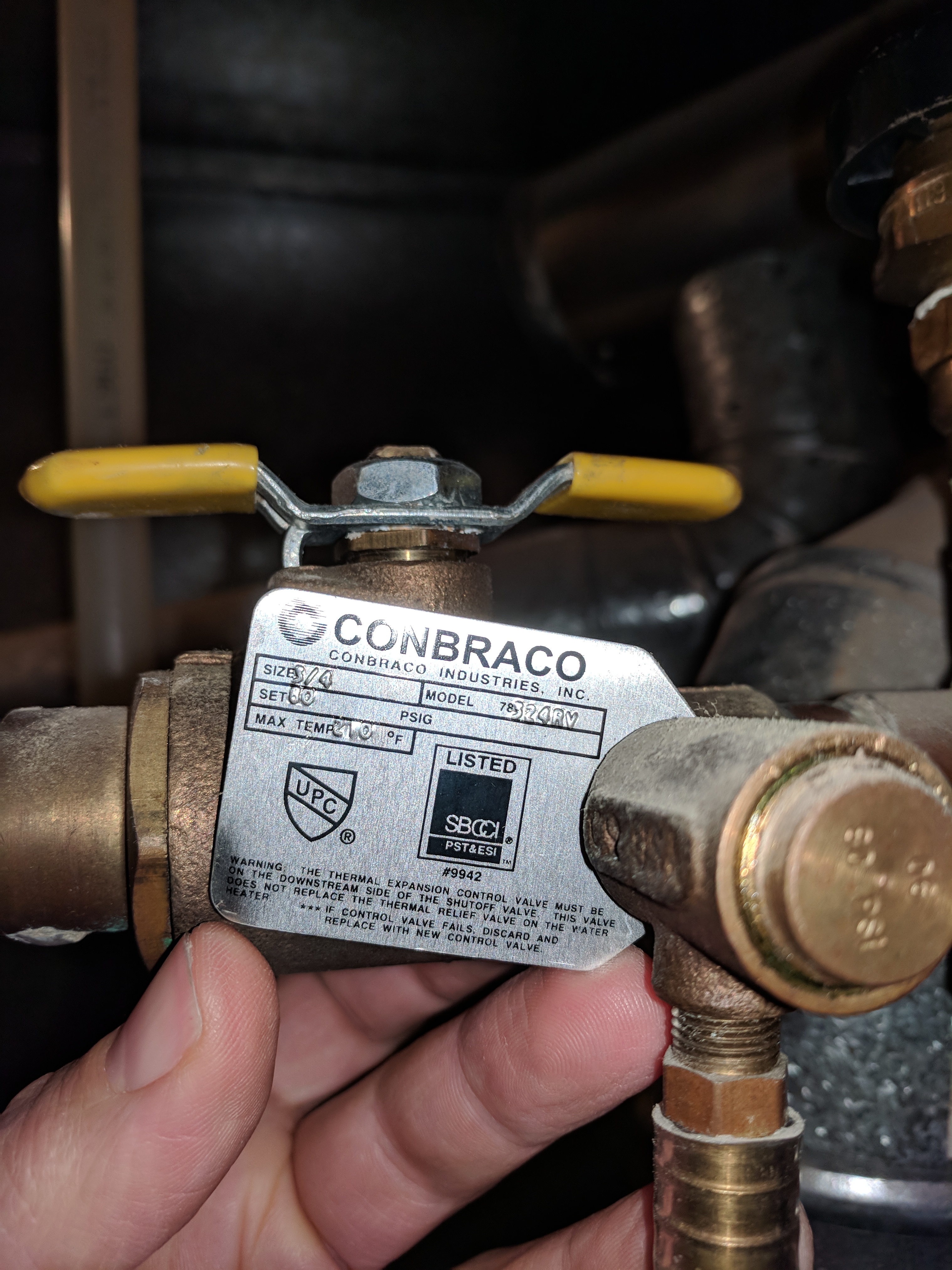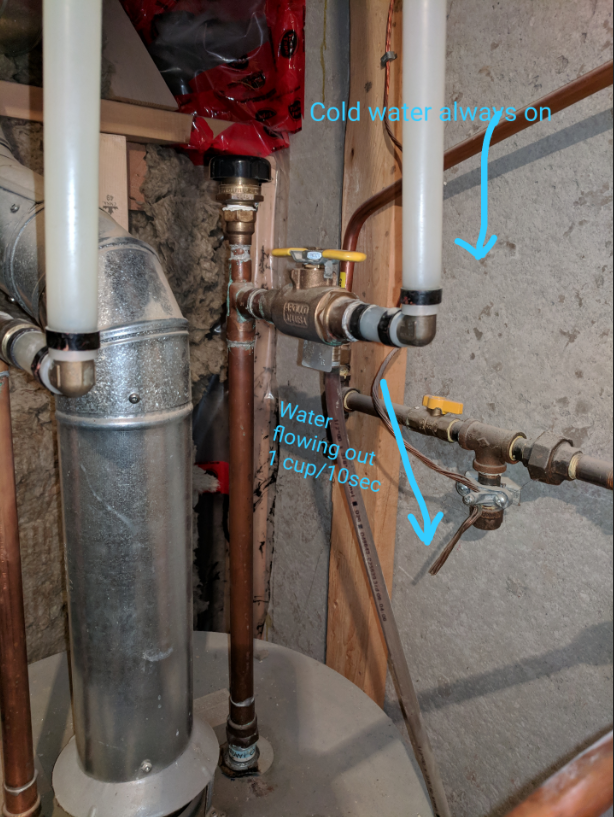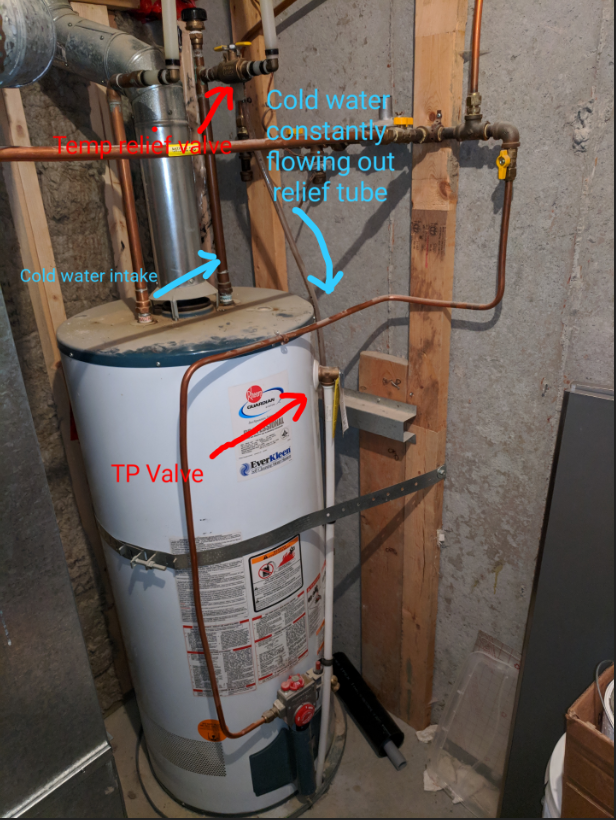edit - made a mistake below.. meant turns from cold to hot.
Hi Reach4,
Many thanks for responding. Please see my system photos below.
Regarding your questions:
1. What are you saying? Are you saying that the water coming out of the plastic tube is hot?
I'm saying when I turn the valve off (below), the water slows down significantly, however, eventually turns from cold to hot. To me this means that there's pressure forcing the hot water out of the tank and down the clear relief tube. I just wanted to add that as a clue in case that adds value to finding the root problem.
2. What is your water pressure when the water is dribbling?
Good question. I assume you mean when the valve is turned off? I will check later.
If you have any additional thoughts on determining the root cause, please let me know. A couple of my pals think that this is related to the valve and that it might be faulty.
Many thanks!
E






